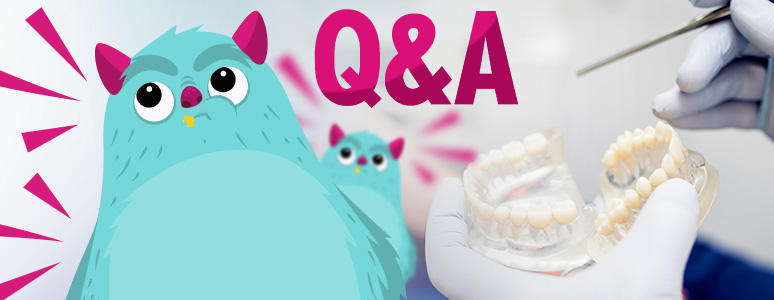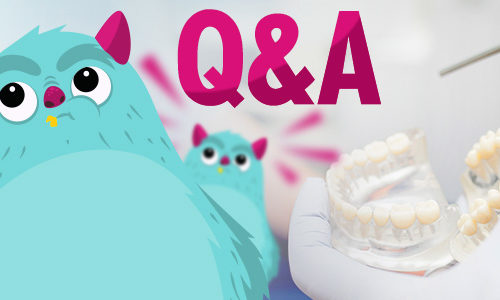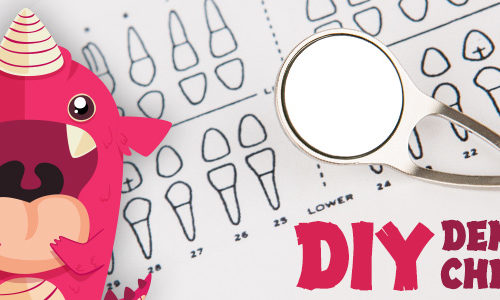-
The Ultimate Guide to Invisalign: Straightening Teeth with Clear Aligners
A perfect smile has been a universal symbol of beauty, confidence, and personality. But what if the path to that perfect smile was clear, comfortable, and almost invisible? Welcome to the world of Invisalign, a revolutionary orthodontic treatment that makes the journey to a perfect smile as pleasing as the destination itself. Key Takeaways Invisalign is a revolutionary orthodontic treatment that offers an invisible and safe alternative to traditional metal braces. It provides tailored solutions for individuals with mild to moderate dental issues, from Invisalign Full for extensive treatment to Invisalign Lite for minor cases. Insurance coverage and payment plans are available, as well as proper care of aligners through…
-
Mewing Tutorial: How to Mew? Before and After Effects and Results, Meaning, Guide
Mewing is a term that’s become popular in online communities. It refers to a specific tongue posture technique that is claimed to have various benefits, primarily reshaping the facial structure. Here’s a brief overview: Origins of Mewing Mewing is named after Dr. John Mew, a British orthodontist. Dr. Mew and his son, Dr. Mike Mew, have promoted the idea that how you rest your tongue affects your facial structure, especially the development of the maxilla (upper jaw). Basic Principle of Mewing The fundamental principle behind mewing is that by maintaining proper tongue posture, one can potentially influence the shape and alignment of the face and jaw over time. Proper tongue…
-
Invisalign Lite vs Full: Difference, Cost, Which Do I Need?
Key Facts Invisalign is a modern orthodontic treatment using clear, removable aligners to straighten teeth Invisalign Lite is targeted at less complex cases requiring minor corrections Invisalign Lite usually lasts about 6 months Invisalign Lite involves fewer aligners (around 10 to 14) compared to Invisalign Full Invisalign Lite is ideal for minor adjustments like slight overcrowding or small gaps Invisalign Lite generally offers a more cost-effective solution due to the shorter treatment time and fewer aligners Both Invisalign Lite and Full provide customized treatment plans based on individual dental profiles What is Invisalign? Invisalign is a modern orthodontic method that employs a series of custom-made, clear plastic aligners to shift…
-
Mewing: The Technique and Its Potential Impact on Facial Structure
Ever wondered if it’s possible to reshape your jawline and enhance your facial structure without resorting to surgery or orthodontic work? Enter mewing, a tongue posture technique that has gained substantial attention online for its potential to do just that. But does it truly work? Let’s venture into the world of mewing to unravel its mysteries. Key Takeaways Mewing is a facial restructuring technique based on the theory that proper tongue alignment and oral posture can influence jaw and facial growth. The science behind Mewing involves the functional matrix hypothesis, though its efficacy is still under debate. Alternatives to mewing are available for facial improvement, but it requires consistency and…
-
My Spacers Hurt So Bad I Can’t Eat – What To Do About Painful Separators?
This article is a part of our Q&A series in which we give detailed answers to our readers' questions. Have a question? Don't hesitate and send it to us to get a detailed answer! Dental spacers, also known as orthodontic separators, are small rubber bands or small metal appliances placed between your teeth to create space for orthodontic bands. These spacers can sometimes cause discomfort or pain, especially during the first few days after placement. If the pain from your spacers is so severe that you cannot eat, this guide will help you manage and alleviate the pain effectively. Why Spacers Hurt Before delving into the management, it’s essential to…
-
Do Orthodontists File Your Teeth After Braces?
This article is a part of our Q&A series in which we give detailed answers to our readers' questions. Have a question? Don't hesitate and send it to us to get a detailed answer! Orthodontic treatment with braces is designed to align your teeth and improve your bite. After the braces are removed, some patients might notice that their teeth are not perfectly shaped or that the edges of some teeth are not even. In these cases, orthodontists might recommend a procedure known as teeth filing or interproximal reduction (IPR) to refine the shape and appearance of the teeth. This guide provides comprehensive information about this process. What is Teeth…
-
How Long Will My Teeth Feel Lose After Braces?
This article is a part of our Q&A series in which we give detailed answers to our readers' questions. Have a question? Don't hesitate and send it to us to get a detailed answer! Braces are a remarkable tool for aligning and straightening teeth, but they come with their own set of challenges. One common concern for many patients is the sensation of loose teeth after braces are removed. This guide will help you understand why this happens and what you can do to manage and care for your teeth during this period. Why Teeth Feel Loose After Braces Tooth Movement: Braces work by applying pressure to the teeth, causing…
-
Prognathism – Treatment Without Surgery, Causes, Skull, Radiology
Key Facts Prognathism refers to a positional discrepancy of the maxillary (upper) or mandibular (lower) jaw in relation to the facial skeleton and soft tissues There are mainly two types of prognathism: Maxillary prognathism where the upper jaw protrudes, and Mandibular prognathism where the lower jaw protrudes It can be caused by genetic factors, hormonal imbalances, or as a result of other conditions like acromegaly The treatment ranges from orthodontic braces to corrective jaw surgery, depending on the severity and underlying cause What is Prognathism in Upper Jaw and Lower Jaw? Prognathism (also called Habsburg chin, Habsburg’s chin, Habsburg jaw or Habsburg’s jaw) is a dental condition where there is…
-
Underbite vs Overbite, Teeth Surgery, Braces, Correction Before and After, Jaw Meaning
An underbite is a dental condition where the lower jaw extends beyond the upper jaw, causing the bottom teeth to protrude in front of the upper teeth. It’s a type of malocclusion that can lead to various oral health issues. Understanding how to diagnose and fix an underbite is crucial for both dental professionals and patients. Key Facts Underbite is a type of malocclusion where the lower teeth sit in front of the upper teeth when the jaw is closed It affects around 5-10% of the world’s population Underbites can range from mild to severe, affecting the appearance, oral health, and functioning of the jaw Genetic factors are a common…
-
Diastema – Teeth Meaning, Closure, Bonding Treatment, Celebrities
Key Facts Diastema refers to a gap or space between two teeth, usually the front teeth in the upper jaw Diastema can be caused by various factors, including genetics, mismatch between jaw and teeth size, habits such as thumb sucking, or gum issues In some cultures, diastema is considered an attractive trait, while in others, it might be seen as an aesthetic issue Treatment for diastema is not always necessary but depends on the underlying cause and personal preference Options for managing diastema range from orthodontic solutions like braces to cosmetic procedures such as dental bonding or veneers What is Diastema? Diastema is a term used in dentistry to describe…




